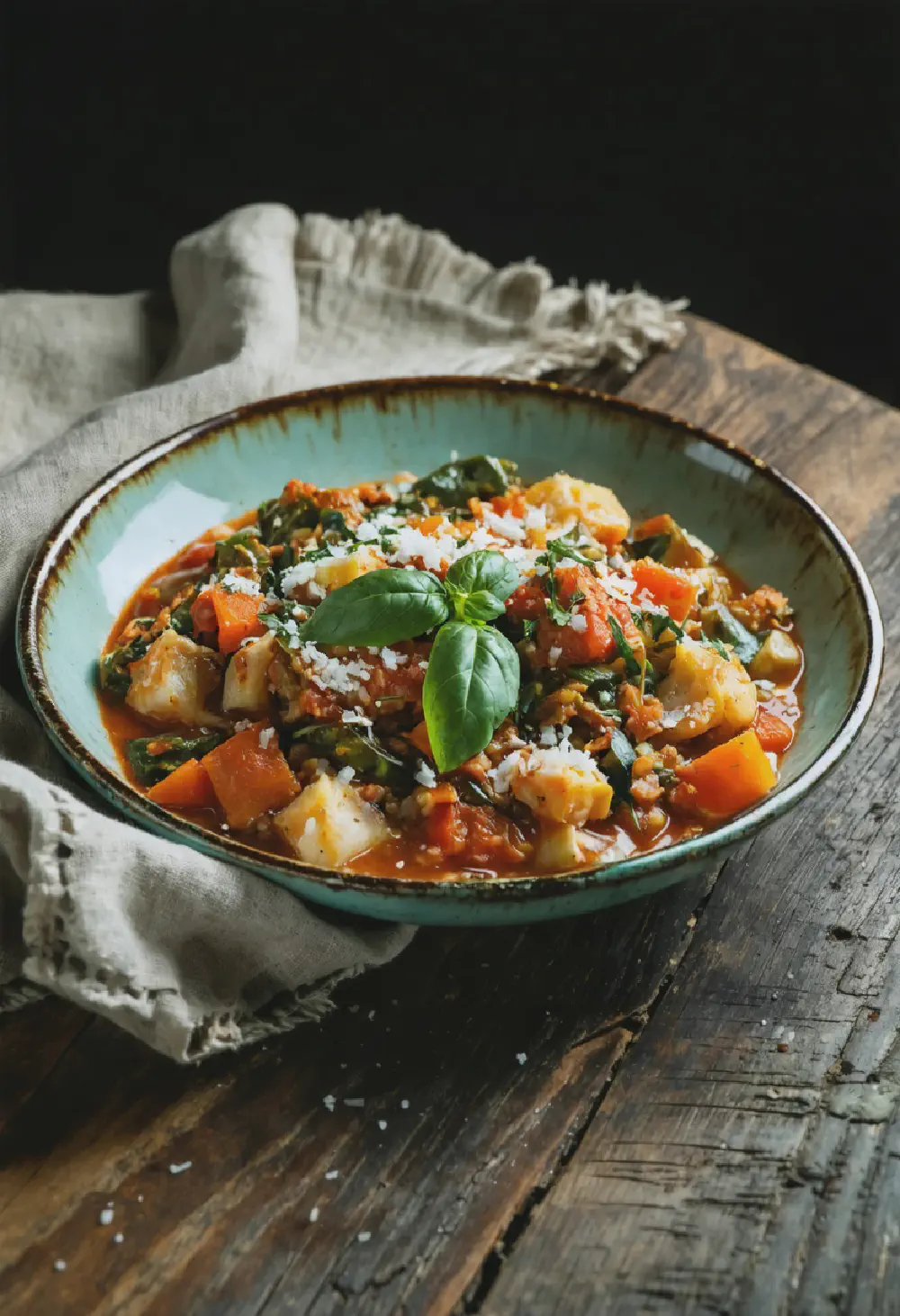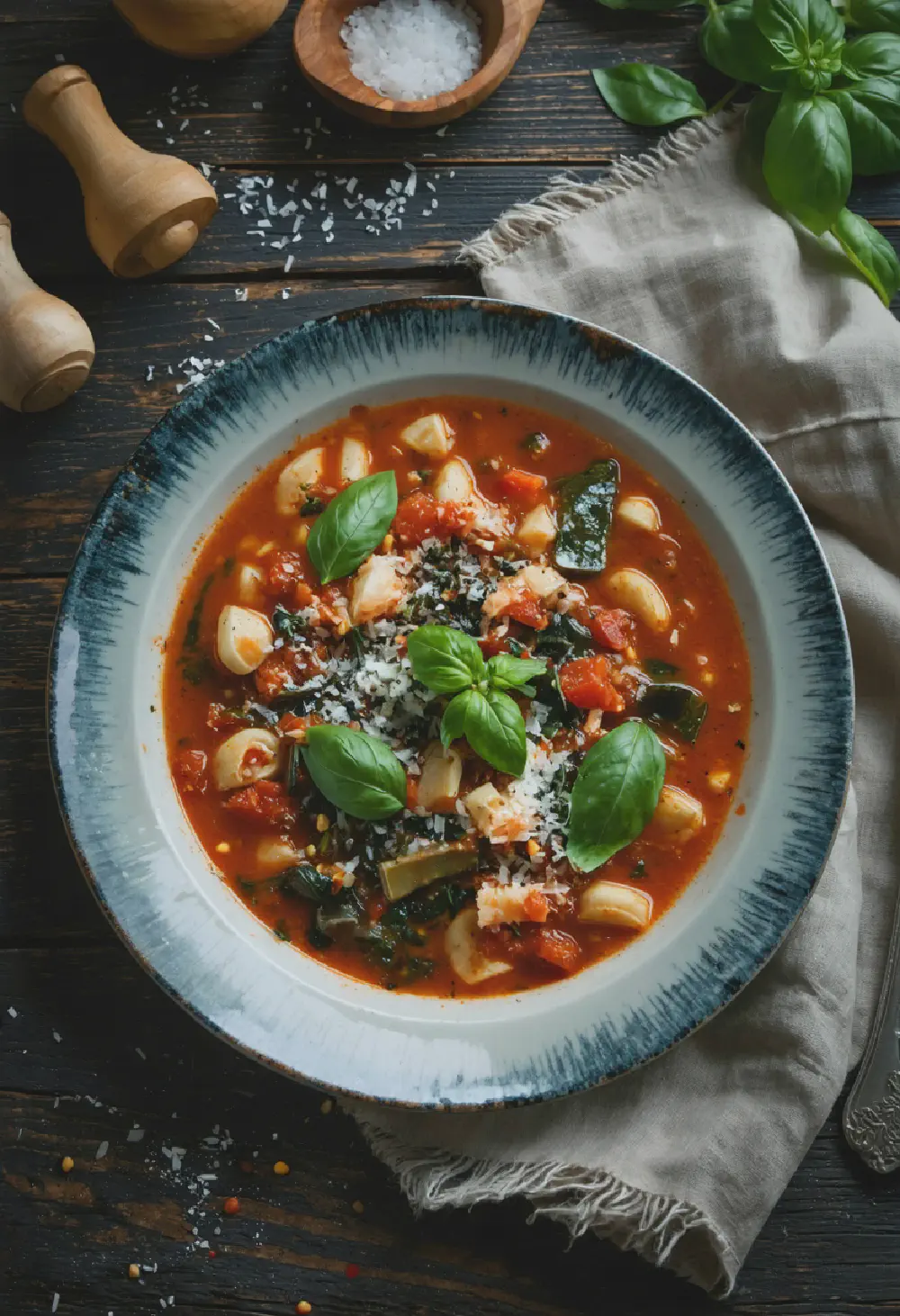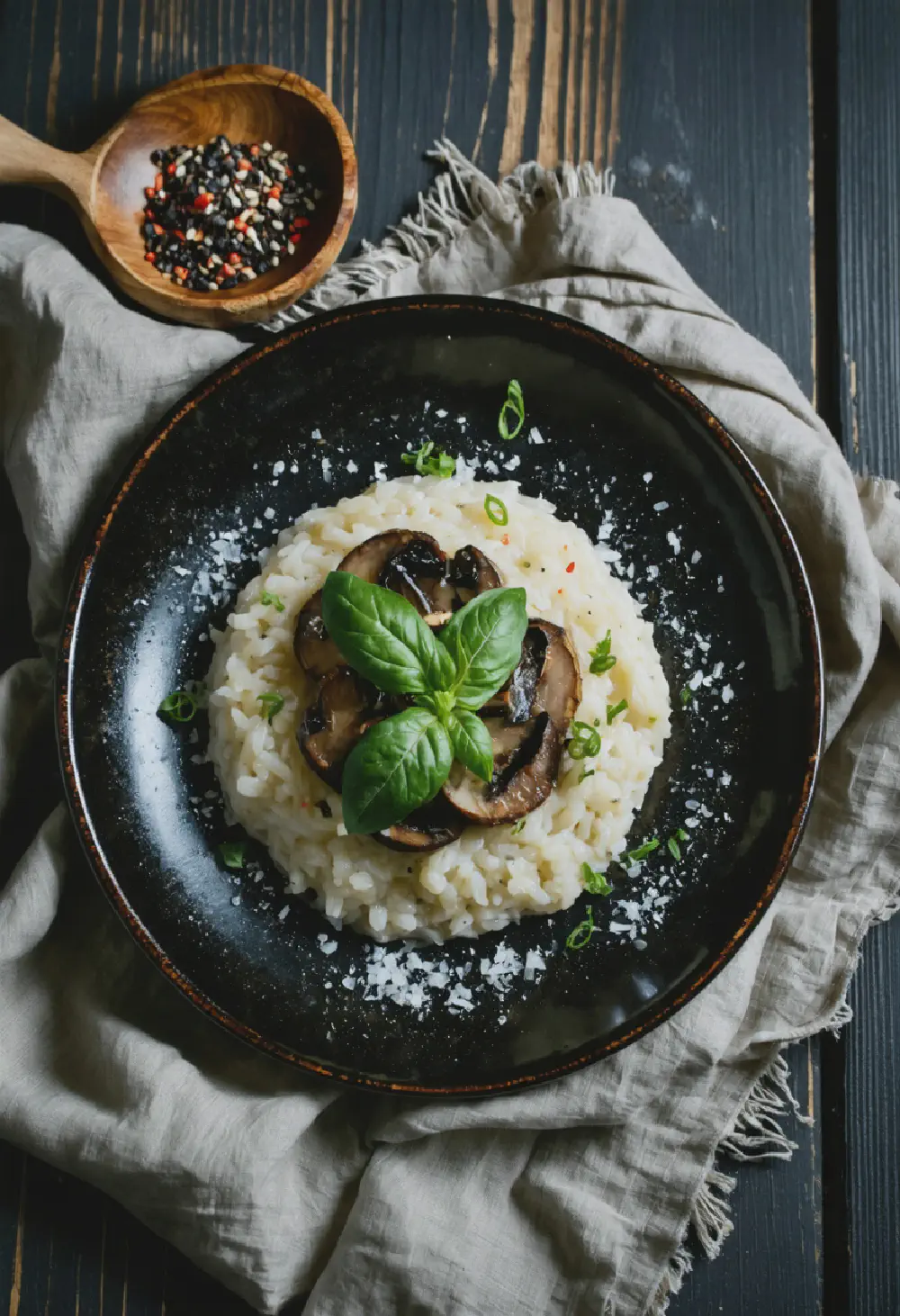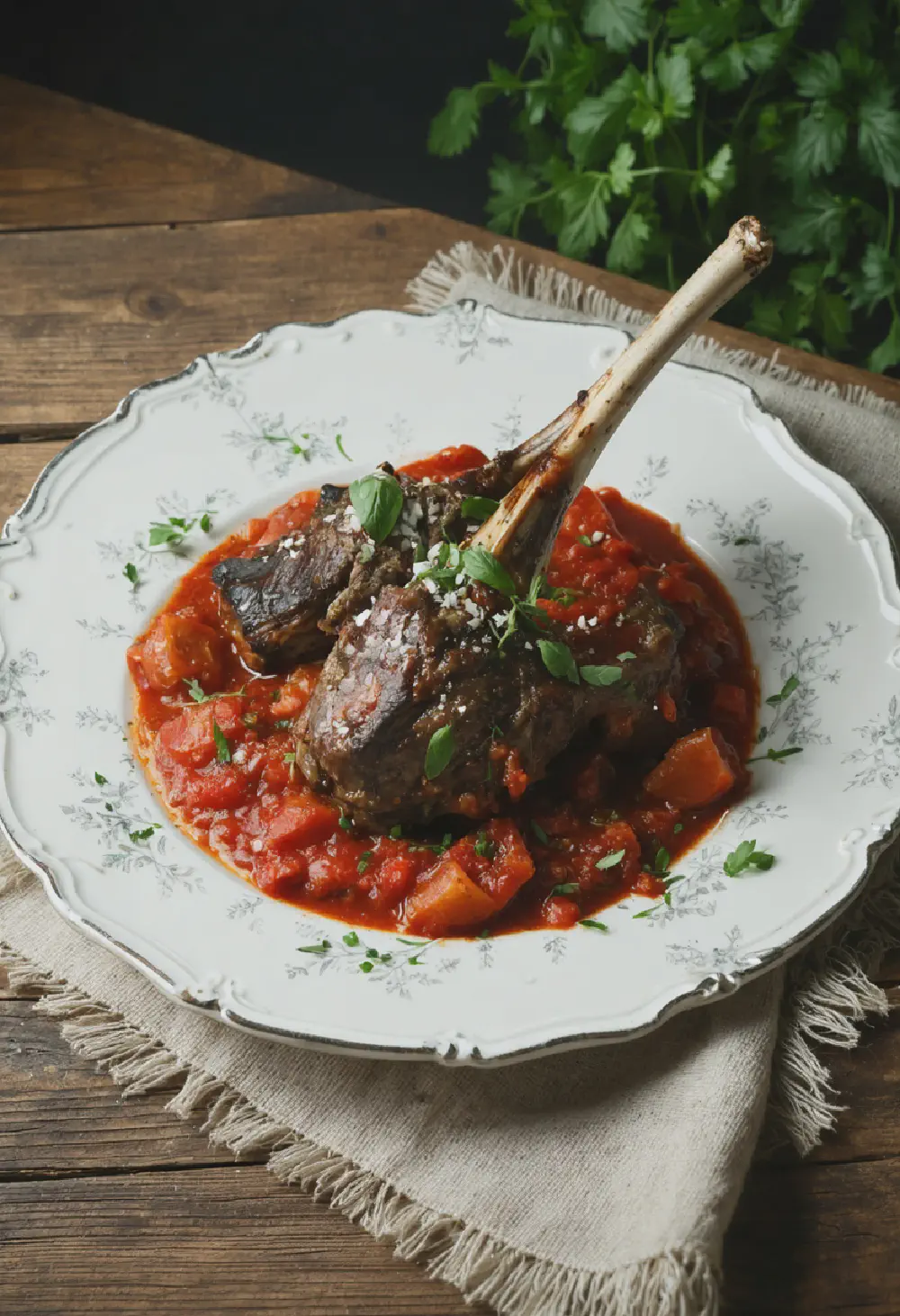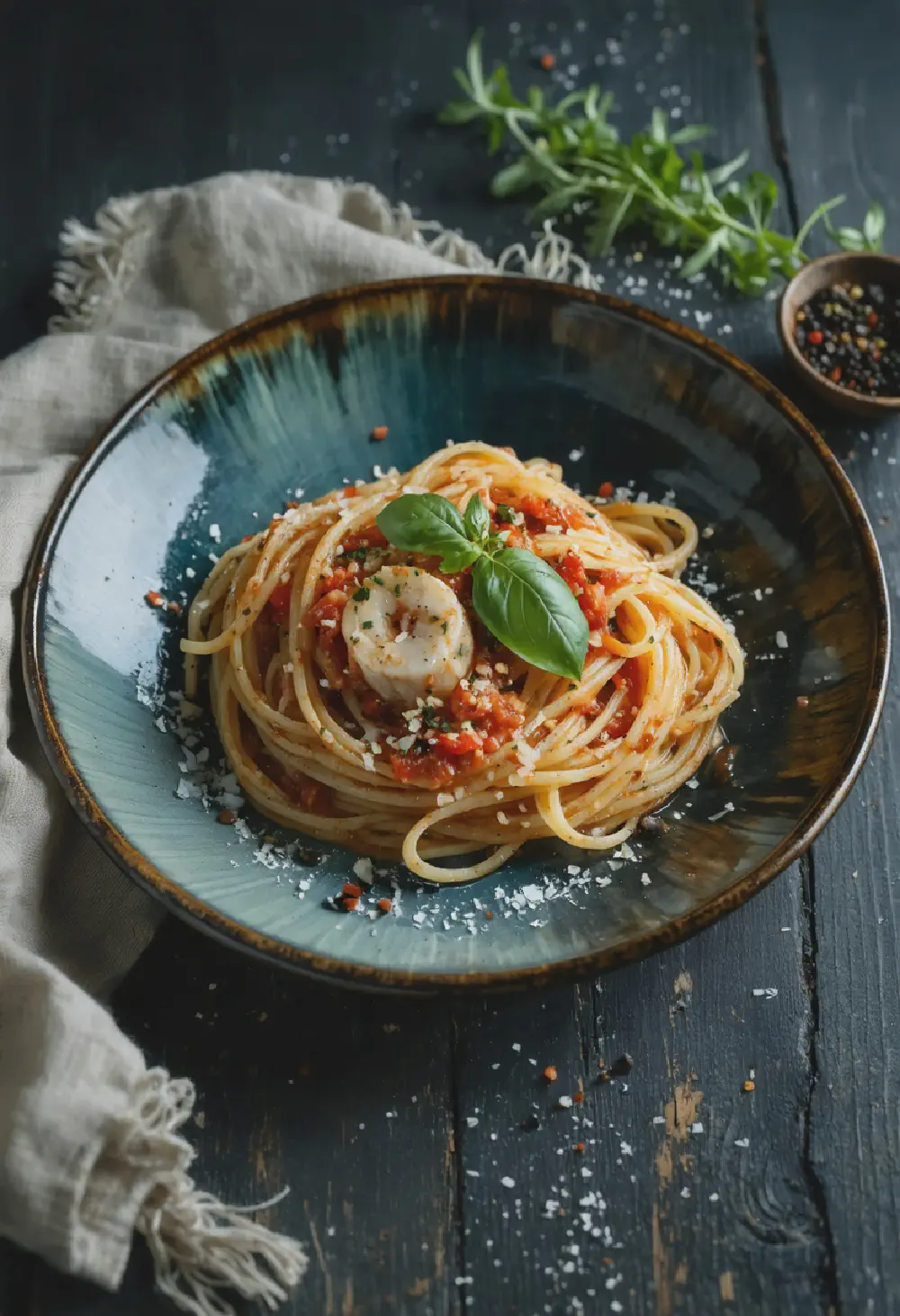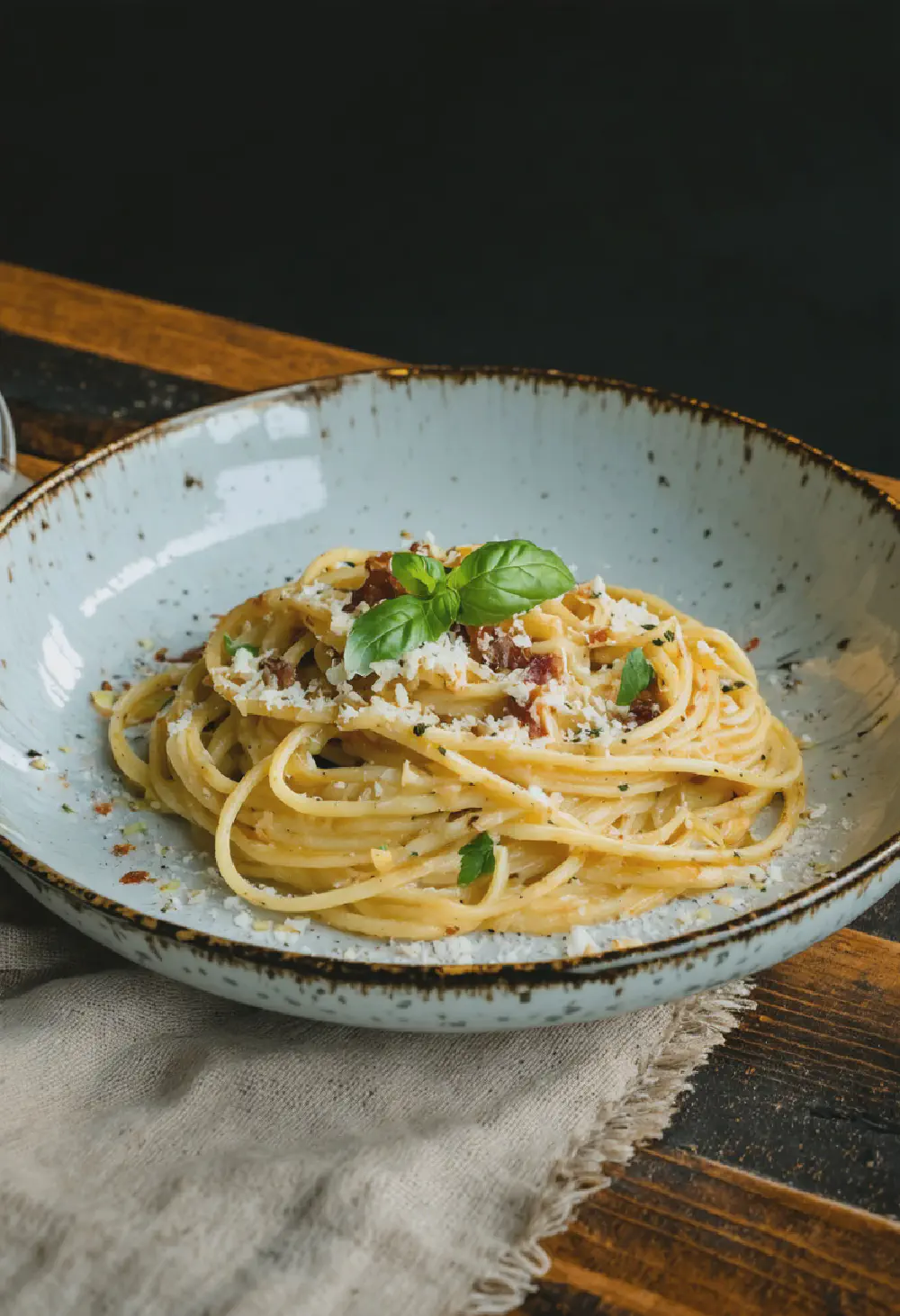Authentic Ribollita
20M
1H and 20M
- Makes 6
- 1/4 cup extra virgin olive oil, plus more for serving
- 1 large onion, finely chopped
- 2 carrots, peeled and diced
- 2 celery stalks, diced
- 4 garlic cloves, minced
- 1 teaspoon dried thyme
- 1 teaspoon dried rosemary
- 1 can (14.5 oz) diced tomatoes
- 1 can (15 oz) cannellini beans, drained and rinsed
- 6 cups vegetable broth
- 1 bunch kale, stems removed and leaves chopped
- 4 cups stale bread, torn into pieces
- Salt and freshly ground black pepper to taste
- Grated Parmesan cheese, for serving
- Heat the olive oil in a large pot over medium heat. Add the onion, carrots, and celery, and cook until the vegetables are softened, about 10 minutes.
- Add the garlic, thyme, and rosemary, and cook for another 2 minutes until fragrant.
- Stir in the diced tomatoes and cook for 5 minutes.
- Add the cannellini beans and vegetable broth. Bring the soup to a boil, then reduce the heat and simmer for 30 minutes.
- Add the kale and cook for another 10 minutes until the kale is tender.
- Stir in the stale bread and let it simmer for 10 more minutes, allowing the bread to thicken the soup. Season with salt and pepper to taste.
- Serve the Ribollita hot, drizzled with extra virgin olive oil and sprinkled with grated Parmesan cheese.
Authentic Ribollita: A Hearty Tuscan Delight
History of Ribollita
Ribollita, a traditional Italian soup, originates from the Tuscany region of Italy. The name “Ribollita” translates to “reboiled,” reflecting its historical preparation method. Initially, Ribollita was a peasant dish, designed to make use of leftover bread and vegetables. In medieval times, Tuscan peasants would cook a large pot of minestrone-like soup, which would then be reheated (or reboiled) over several days, with bread added to thicken it. This practice not only preserved the soup but also enhanced its flavors, making Ribollita a beloved staple in Tuscan cuisine. Today, while the ingredients may have evolved, the essence of Ribollita remains a testament to the ingenuity and resourcefulness of Italian culinary traditions.
Taste Profile of Ribollita
The taste profile of Ribollita is a harmonious blend of rustic and comforting flavors. At its core, Ribollita is characterized by its thick, hearty texture, achieved through the use of day-old bread. The soup boasts a savory depth from ingredients like cannellini beans, kale, and sometimes cabbage, which contribute to its rich, earthy undertones. Tomatoes add a slight tanginess, while herbs such as rosemary and thyme infuse the soup with aromatic notes. The slow cooking process allows these flavors to meld together, creating a warm, satisfying dish that’s perfect for cold days. The balance of vegetables, beans, and bread results in a nutritious and filling meal that captures the essence of Tuscan comfort food.
Cultural Significance of Ribollita in Italian Cuisine
Ribollita holds a special place in Italian cuisine, particularly within the Tuscan region. It embodies the principle of “cucina povera,” or “poor kitchen,” which emphasizes the use of simple, affordable ingredients to create nourishing meals. This dish is a reflection of Italy’s rich culinary heritage, where resourcefulness and sustainability are celebrated. Ribollita is often served at family gatherings and community events, symbolizing warmth, hospitality, and the joy of sharing a meal. In Tuscany, it’s not uncommon to find Ribollita on the menus of local trattorias, where it’s cherished as a comforting reminder of home. Its cultural significance extends beyond its taste, representing the values of community, tradition, and the art of making the most out of what you have.

